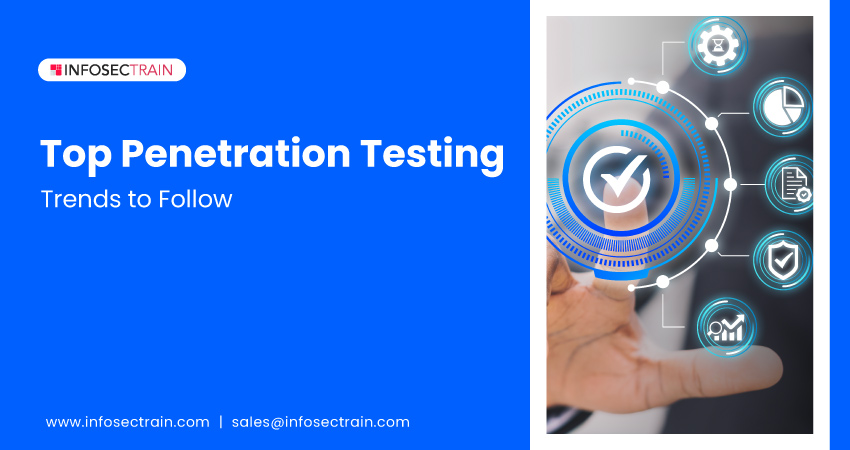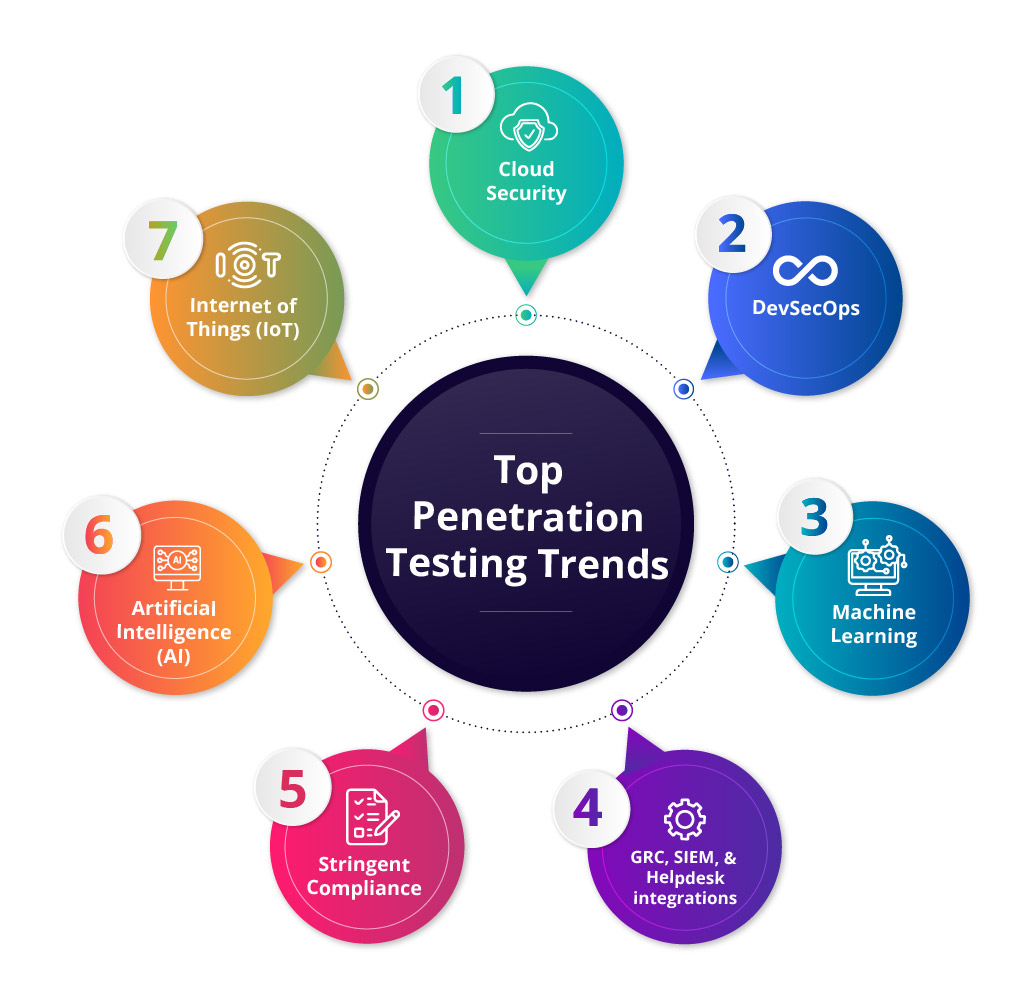Top Penetration Testing Trends to Follow
Organizations are now becoming more vulnerable to cyber threats because digital information and technology are firmly embedded in daily operations. The malicious cyberattacks, which target information and IT infrastructure, are substantially more sophisticated. Therefore, the growing need to protect networks, computer systems, and software-based assets such as web and mobile applications is driving the value of penetration testing globally. Additionally, the increasing use of cloud-based security services increases the demand for penetration testing. Today, all tech companies and financial services organizations frequently perform penetration testing to find their computer systems and application vulnerabilities, including configuration errors, design flaws, and software bugs.

What is Penetration Testing?
Penetration testing is one of the essential parts of cybersecurity. Penetration testing, often known as ethical hacking or white hat hacking, is a security assessment that analyzes a network, system, or software application to identify security vulnerabilities. We can describe it as a simulated attack in which a Penetration Tester or Cyber Security Expert attempts to identify and exploit vulnerabilities and security loopholes in a computer system that a malicious hacker might exploit.
Top Future Trends in Penetration Testing:
 1.Cloud Security
1.Cloud Security
Many companies are migrating to the cloud to increase productivity and foster communication and collaboration. However, most cloud services do not yet provide secure authentication or encryption to the companies. Cloud-based app security testing is something that organizations must implement to safeguard all endpoints and identify threats, vulnerabilities, and loopholes. Therefore, to ensure the security of their cloud, they will require penetration testing.
2. DevSecOps
A key component of integrating security into the DevOps architecture is DevSecOps. It develops a “security as code” culture by which you can automate security workflows. It uses agile methodologies to efficiently incorporate security testing into the development process, which is advantageous to Penetration Testers. It integrates penetration testing activities by being adaptable and provides quick code-level vulnerability detection. Utilizing this proactive approach, you can detect and remediate security vulnerabilities early.
3. Internet of Things (IoT)
As the number of internet-connected (IoT) devices is increasing in our day-to-day life, they are becoming a very significant target for malicious actors. Hackers always try to find ways to exploit the vulnerabilities of these types of devices. As a result, the Penetration Tester should be aware of all current threats that affect IoT devices and also be familiar with how to defend against them when testing a network.
4. Artificial Intelligence (AI)
Nowadays, Artificial Intelligence (AI) technology is advancing rapidly, and businesses are increasingly incorporating it into their security measures. Artificial Intelligence-based automation makes it much simpler to perform penetration testing on a large scale and reliably. In the upcoming days, the use of AI in penetration testing will increase even more. Therefore, Penetration Testers are considering adopting this technology to make results more accurate and enhance evaluation efficiency and cyber threat detection capability.
5. Machine Learning (ML)
The last few years. Machine Learning plays a crucial role in cybersecurity. It can be a big game-changer in cybersecurity by reducing the human aspect. It can anticipate and respond instantly to ongoing threats. The stability of your organization’s cybersecurity will improve by incorporating it into the penetration testing process. Also, the precision and contextual information it can provide to penetration testing can change the endpoint.
6. Integrations with GRC, SIEM, and Helpdesk systems
Since patching systems, rules, and procedures are increasingly incorporated into penetration testing, GRC, SIEM, and other helpdesk systems would also need to implement these changes to consolidate numerous teams into a cybersecurity unit. These systems aid in the automation and simplification of the tasks of various teams in the situation of help and risk remediation. When a vulnerability is discovered, alerts go active to inform the respective teams and recommend corrective steps.
7. Stringent Regulatory Compliance
As technology advances, cyber-attacks evolve, necessitating the growth of regulatory compliances. Penetration Testers must remain current with data security requirements due to the ever-increasing regulatory landscape.
Related articles:
- What is Penetration Testing?
- Top Methodologies to Improve Penetration Testing
- Top Tools Required to Become a Penetration Tester
- CPENT The Ultimate Pentesting Certification
- Protect Your Organization with Pen Testing
Penetration Testing with InfosecTrain
Penetration testing is a technique for evaluating the system or network’s security posture. Enroll in one of InfosecTrain’s penetration testing certification training courses to understand penetration testing with our professionals. Our training courses are available in live instructor-led and self-paced sessions, making it simple for you to start and finish your training journey with ease. Join InfosecTrain to acquire knowledge that will transform your life. To assist you in honing your penetration testing abilities, we offer a range of courses, including:
TRAINING CALENDAR of Upcoming Batches For APT with KALI Linux
| Start Date | End Date | Start - End Time | Batch Type | Training Mode | Batch Status | |
|---|---|---|---|---|---|---|
| 04-May-2025 | 21-Jun-2025 | 09:00 - 13:00 IST | Weekend | Online | [ Open ] |










 1800-843-7890 (India)
1800-843-7890 (India)